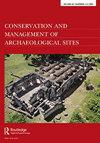Guest Editorial
IF 0.8
4区 历史学
0 ARCHAEOLOGY
Conservation and Management of Archaeological Sites
Pub Date : 2018-03-04
DOI:10.1080/13505033.2018.1462075
引用次数: 0
Abstract
Three papers in this CMAS issue focus on the management of southern African rock art sites. This is not by coincidence. They proceed from discussions held during a special ‘rock art heritage and management’ session (organised by Mélanie Duval and Stéphane Hœrlé) of the 23rd biennial meeting of the Society of the Africanist Archaeologist (Toulouse, France, 2016). The aim of this session was to examine to what extent and for which stakeholders rock art sites are a ‘cultural heritage’, beyond different challenges of preservation, promotion, and appropriation. Although presented papers covered the entire continent1 a large majority focused on Southern Africa where research on this subject seems encouraged by a conjunction of available means and acute issues related to the plurality of uses: domestic (pens), spiritual (ritual to ancestors), medicinal (use of pigments for medicines), tourist (development of open-air sites). This is exemplified by the papers gathered in this issue. Papers by Paul Hubbard and Mélanie Duval et al. were originally presented and discussed during the 2016 SAfA meeting. The paper by Ancila Nhamo is an original contribution submitted while this special issue was being put together. It was included because it offers another viewpoint on the situation in Zimbabwe and deepens our understanding of what is at stake for rock art site management. Although these papers base their discussion on Zimbabwean and South African experiences, many countries face similar challenges, albeit under different circumstances. These three papers, therefore, inform on general issues in rock art management and conservation for all countries with open-air rock art. Witness throughout all times, present all over the world, rock art sites are involved in complex heritage-making processes joining a large range of environmental (Darvill and Fernandes 2014) and human factors (Jopela 2011). In Africa rock art is mostly found in easily accessible open-air sites and these human factors are often linked with a variety of uses: domestic, spiritual, medicinal and/ or tourist. These factors are made more complex by polymorphic cultural and identity stakes (Duval 2012), as rock art sites are linked with the history of the peopling and the evolution of the activities and land uses (Pleurdeau et al. 2012), today mobilised by various stakeholders in post-colonial contexts (Hampson 2013; Ndlovu 2011). All in all, because they have permeated people’s natural, cultural and mental landscapes for such a long time, rock art sites not only raise the usual issues related to heritage-making process but also shed a revealing light on the relationships between stakeholders, space and time (Harvey 2001). The analysis of heritage-making process, i.e. the process through which a ‘spatial object’ becomes an ‘heritage object’ which social groups want to preserve through time, is directly connected to issues such as the interplay of participants at different levels (Ndoro and Pwiti 2001), local community involvement (Sullivan 2004), tourism management (Duval, Gauchon, and Smith 2017) and contents of promotion discourse (Mazel 2008), among others. In an applied prospect, one of the stakes is to define evolutionary balances between the various actors, in order to reconcile the diverse manners to perceive why and how an archaeological site makes sense (Waterton 2005). In their papers Ancila Nhamo and Paul Hubbard investigate the stakes of rock art management in the Zimbabwean context. While Ancila Nhamo proposes a global approach to rock art preservation issues in the country, Paul Hubbard digs into the history of rock art management in the Matobo Hills.客人编辑
本期CMAS的三篇论文聚焦于非洲南部岩画遗址的管理。这并非巧合。他们是从第23届非洲考古学家协会两年一次的会议(法国图卢兹,2016年)的“岩石艺术遗产和管理”特别会议(由msamulanie Duval和stsamuane Hœrlé组织)上进行的讨论中得出的结论。本次会议的目的是研究岩石艺术遗址在多大程度上以及在何种程度上是“文化遗产”,超越了保护、推广和拨款的不同挑战。虽然提交的论文涵盖了整个非洲大陆,但绝大多数集中在南部非洲,在那里,对这一主题的研究似乎受到了现有手段和与多种用途有关的尖锐问题的鼓励:家庭(笔),精神(祖先的仪式),医疗(使用颜料制作药物),旅游(开发露天场所)。本期收录的论文就是例证。Paul Hubbard和msamlanie Duval等人的论文最初在2016年SAfA会议上提出并讨论。Ancila Nhamo的论文是在本期特刊制作期间提交的原创文章。它被包括进来是因为它提供了关于津巴布韦局势的另一种观点,并加深了我们对岩石艺术遗址管理的利害关系的理解。尽管这些论文的讨论基于津巴布韦和南非的经验,但许多国家面临着类似的挑战,尽管情况不同。因此,这三篇论文为所有拥有露天岩石艺术的国家提供了岩石艺术管理和保护的一般问题。纵观历史,遍布世界各地,岩石艺术遗址参与了复杂的遗产制作过程,加入了大范围的环境因素(Darvill and Fernandes 2014)和人为因素(Jopela 2011)。在非洲,岩石艺术大多出现在容易接近的露天场所,这些人为因素通常与各种用途有关:家庭、精神、医疗和/或旅游。这些因素由于多形态的文化和身份利害关系而变得更加复杂(Duval 2012),因为岩石艺术遗址与人类的历史以及活动和土地使用的演变(Pleurdeau等人,2012)相关联,今天在后殖民背景下被各种利益相关者动员起来(Hampson 2013;Ndlovu 2011)。总而言之,由于岩石艺术遗址长期渗透在人们的自然、文化和精神景观中,它不仅提出了与遗产制作过程有关的常见问题,而且揭示了利益相关者、空间和时间之间的关系(Harvey 2001)。遗产创造过程的分析,即“空间对象”成为社会群体希望通过时间保存的“遗产对象”的过程,与不同层次参与者的相互作用(Ndoro和Pwiti 2001年)、当地社区参与(Sullivan 2004年)、旅游管理(Duval, Gauchon和Smith 2017年)和推广话语内容(Mazel 2008年)等问题直接相关。在应用前景中,其中一个利害关系是定义不同参与者之间的进化平衡,以便调和理解考古遗址为什么和如何有意义的不同方式(Waterton 2005)。在他们的论文中,Ancila Nhamo和Paul Hubbard调查了津巴布韦背景下岩石艺术管理的利害关系。当Ancila Nhamo提出一个全球性的方法来解决该国的岩石艺术保护问题时,Paul Hubbard深入研究了Matobo山岩石艺术管理的历史。
本文章由计算机程序翻译,如有差异,请以英文原文为准。
求助全文
约1分钟内获得全文
求助全文
来源期刊

Conservation and Management of Archaeological Sites
ARCHAEOLOGY-
CiteScore
0.40
自引率
0.00%
发文量
1
期刊介绍:
The journal Conservation and Management of Archaeological Sites (CMAS) has established itself as the primary reference in this field, both for active professionals and for university teachers and students. Launched in 1995, it is the only journal that covers both theoretical and practical issues in heritage site management and conservation. Peer-reviewed papers from around the world report on new thinking and best practice in site management and conservation. Topics covered include: •Cultural, social, ethical and theoretical issues in archaeological site management and conservation •Site management •Historical documentation and condition reporting •Site deterioration and environmental monitoring •Preventative conservation, including reburial and protective sheltering of sites •Building materials analysis and treatment •Restoration and reconstruction of buildings •Visitor management and sustainable tourism •Site interpretation •National and international legislation and charters
 求助内容:
求助内容: 应助结果提醒方式:
应助结果提醒方式:


